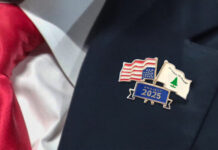You’re a smart engineer, and you’re here?”
That’s the question a consortium of San Diego technologists, brought together by the San Diego Venture Group, will pose by way of digital billboard this January to their Bay Area equivalents stuck in traffic on highway 101. The not-so-subtle message is that, for tech workers, San Diego is better.
It’s not intended as a mean-spirited jab. Rather, the billboard is part of a massive, calculated campaign, dubbed the “#UltimateLifeHack,” designed to poach top Silicon Valley software engineers — particularly those who graduated from the University of California, San Diego but left for greener pastures — and bring them down here. It will culminate with an unprecedented job fair, featuring representatives from more than 40 San Diego firms, including Human Longevity and Resmed, on Feb. 1 at the Computer History Museum in Mountain View.
Participating companies, which are helping to finance costs that will likely reach $80,000, range from billion-dollar bigwigs such as Teradata and Qualcomm, to flush-with-cash upstarts like Classy or Seismic. Though designed with recruiting in mind, the event is programmed to be unlike a run-of-the-mill job fair. Spanning the entirety of the museum, the gathering will feature conference-style programming, with a keynote address on the implications of 5G from Qualcomm CTO Matt Grob. Perhaps equally compelling is that also present will be two San Diego staples: fish tacos and craft beer. In a separate hall, San Diego firms will man booths to promote available positions and company cultures.
The program started with a much different question than the ones that will appear on Bay Area billboards. That question? “How do we stop all of our grads from getting on the first plane and going to Silicon Valley?,” said Mike Krenn, president of the San Diego Venture Group and the event organizer.
“These kids are 21 years old; there’s too many public companies up in the Valley; there’s more than 1,000 venture-backed companies; they’re going to go. They’re going to go chase that dream,” he said.
So instead of lamenting the exodus, Krenn decided the best approach was to let these youngsters enjoy their prodigal adventures, and then woo them back a few years later, when the Silicon Valley dream had faded into a reality of exorbitantly priced homes and apartments, gloomy skies, long commutes and grumpy neighbors. A message was born: Return home and you can make a respectable living, work at an industry-defining company and truly embrace the mantra, life’s a beach.
UCSD bought into the idea almost immediately. So, too, did ViaSat, Illumina, Qualcomm and Intuit, Krenn said. Others continued to trickle into the fold, as one of Krenn’s top goals was to make the list of participating businesses long and diverse, in part to dispel a commonly held belief among outsiders that transplants could find themselves jobless if they bet on the wrong company.
For its part, UCSD’s alumni group has agreed to invite recent tech and engineering grads living in the Bay Area to the job fair.
“In the tech sector, we have this issue with graduates moving up to Silicon Valley,” said Paul Roben, the associate vice chancellor on innovation at the university. “It’s not a bad thing …. Let them get the experience, then, at a later date, attract them to come down here.”
The consortium ultimately expects to attract 500 to 1,000 software engineers to attend the job fair.





